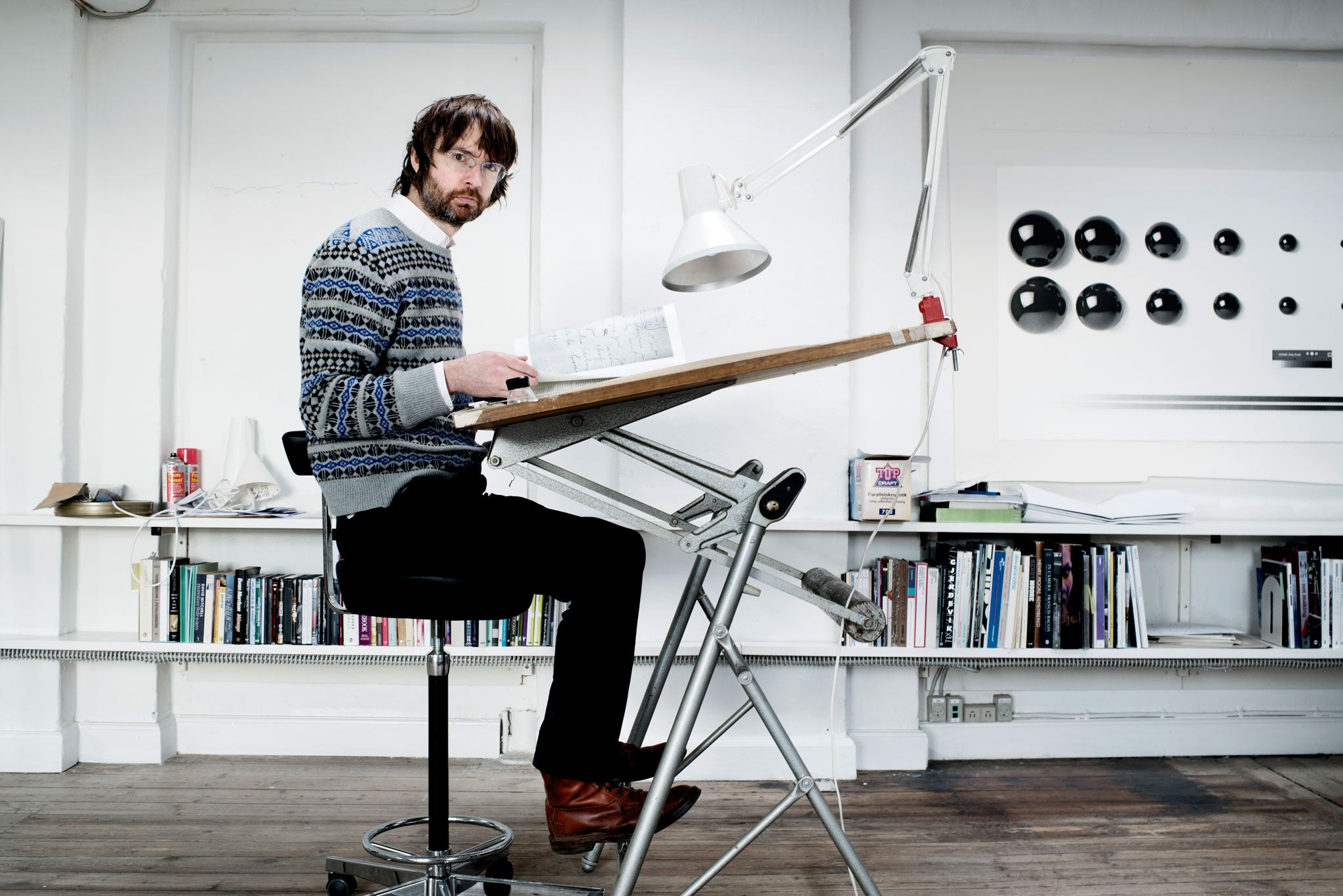In The Studio: Simon Starling, artist
'It's about the long route from A to B. The sense of the detour is important to me'

Your support helps us to tell the story
This election is still a dead heat, according to most polls. In a fight with such wafer-thin margins, we need reporters on the ground talking to the people Trump and Harris are courting. Your support allows us to keep sending journalists to the story.
The Independent is trusted by 27 million Americans from across the entire political spectrum every month. Unlike many other quality news outlets, we choose not to lock you out of our reporting and analysis with paywalls. But quality journalism must still be paid for.
Help us keep bring these critical stories to light. Your support makes all the difference.
Simon Starling won the Turner prize in 2005 for Shedboatshed, a work in which the artist, having found a shed on the banks of the Rhine, transformed parts of it into a boat, paddled it down the river and then rebuilt it as a shed. For many this description alone might be confirmation of the folly of contemporary art. For Starling, "it is about taking the long route from A to B. That sense of the detour is really important to me."
Starling, born in Epsom in 1967, was previously based in Berlin but moved to Copenhagen six years with his family (he has two children) when his Danish partner, Henrietta, got a job running an artspace in the city. Finding a space in Copenhagen took months of searching. In the end, he and his assistants found this bright set of rooms up five flights of stairs in a building largely composed of architectural practices. "I like it here as it is a great place to think," he says.
The suite of rooms gives away few clues about his practice. I point out how few books there are and the affable, bespectacled Starling smiles and points at the staircase, saying that he has a book-lined study at home where he sits and works. Here he has a computer station as well as a drawing board sited away from his two assistants. He is also in the process of installing a darkroom, as he likes the physicality of dipping his own prints.
"Photography is where it all started with me and I missed it," he says. He initially studied at Trent Polytechnic in Nottingham where "there were no studios – there were dark rooms and communal rooms where you could stick things up if you wanted to, so I always made work out in the world." He completed his education at Glasgow School of Art, where, he confesses, he found the large studio he was given at the top of the Mackintosh Building almost overwhelming: "I felt I had to invent something, some new language to fill the space."
In the past, Starling has flown to Ecuador in search of balsawood to make a model airplane that would fly over a museum in Australia. He has also immersed a copy of a Henry Moore sculpture in North America's Great Lakes for 18 months before retrieving it to exhibit it encrusted in a carapace of mussels in a gallery.
It is the initial idea, the research and the voyage, that are paramount in Starling's work. Often the end result seems superfluous. If we missed the flight of Starling's airplane, we merely saw a small model displayed above a heap of excess balsawood. But it is the heroics of tracking down the initial materials, the faded faxes, the long aeroplane trip to a banana plantation, which fix the mind. If the viewer does not derive the same pleasure as Starling, then that is true of so much of contemporary art.
Simon Starling, Tate Britain Commission, London SW1 (020 7887 8888) 12 March to 20 October
Join our commenting forum
Join thought-provoking conversations, follow other Independent readers and see their replies
Comments